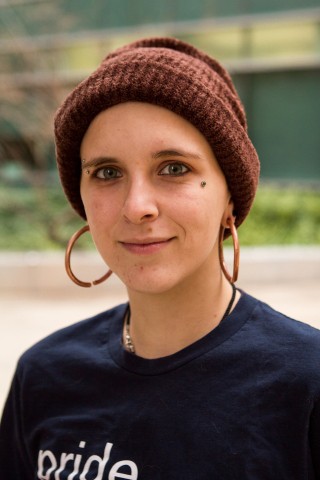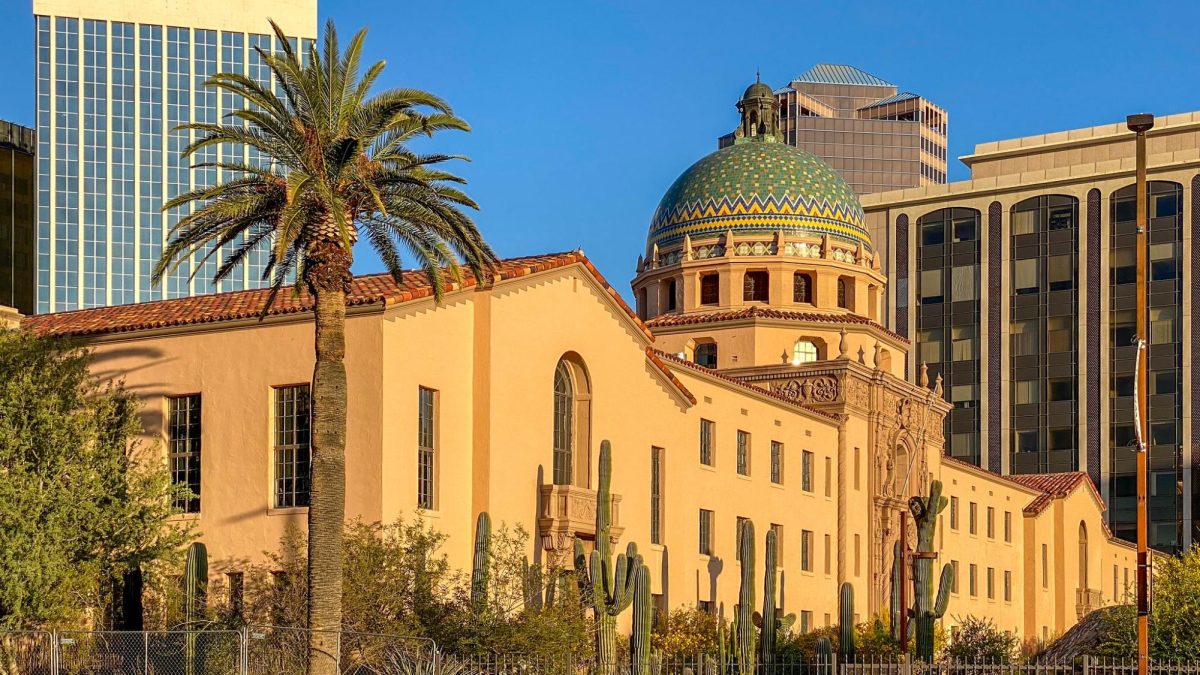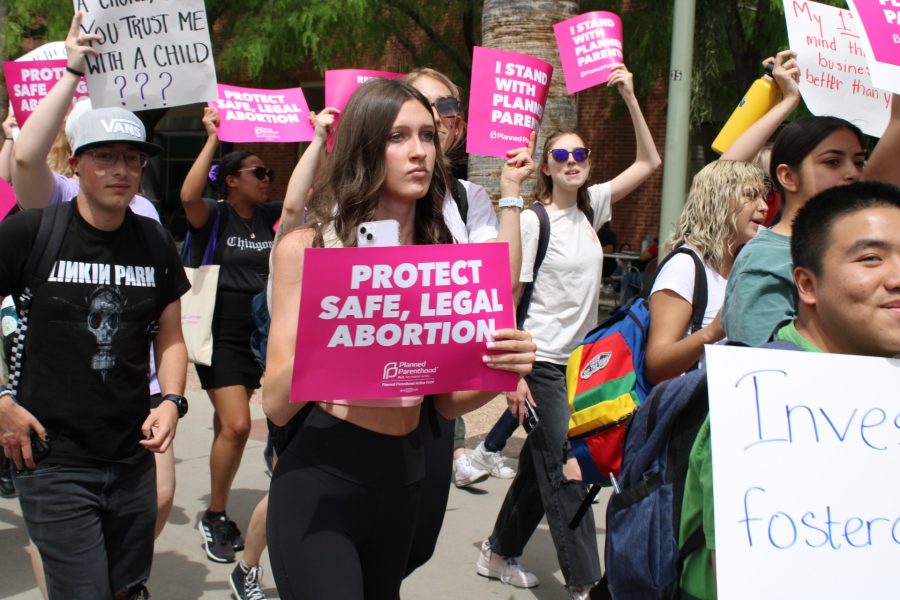Kat Hermanson, the lead graphic designer for the LGBTQ Resource Center and a senior studying gender & women studies, has been with the LBGTQ Resource Center for three years and is excited to begin her fourth.
Over the years, Hermanson has watched the resource center’s mission shift from an education-based effort to inform the campus about lesbian, gay, bisexual, transgender and questioning needs, to an effort to provide a safe physical space for LGBTQ students to find and build a community.
Hermanson said the main resources that the center provides students include the physical space, social events, counseling referrals and emotional support for students who come into the center in crisis.
The Daily Wildcat sat down with Hermanson to talk about the center, the aftermath of the Orlando shootings and what the university could do better to support its LGBTQ population:
Daily Wildcat: After the tragedy in Orlando, did activity change at the resource center? Are you doing any different programs? Are people reaching out with different needs?
Hermanson: Mainly during the summer the center is pretty minimally staffed because the school way under funds us. We don’t have enough funding to hire as many people as we need to keep more community on campus, which is a really big problem. What’s happened since the Orlando shooting is we’ve had a lot of people in the center who are from the other resource centers or the Common Ground Alliance or other centers for diversity on campus who will come into the center. And [they’ve] been there to help create a more energetic and supportive atmosphere than we could provide with just a few people. So that was the week after and that was really important and also in the week after we had a forum — I think the Wednesday after — we had an open forum for the community that had around 35 participants. It was a really important day for a lot of people to decompress from what had happened.
Those are the big things — things have calmed down a little now, especially with it [the Orlando shooting] being on the other side of the country. It just becomes sort of routine dealing with the residual feeling of tragedy, and I feel like everyone in the community is more on their guard now – a lot more worried about safety – and I think especially with just general public opinion around gay and lesbian populations. Public opinion has shifted a lot in the past few decades, and so when something like that happens it removes the blindfold of like, ‘oh things are getting better’ and it becomes more obvious to people who may have not been thinking about it as much that there is still a lot to be looking towards.
DW: You said the center doesn’t get enough funding to support enough staff members?
Hermanson: Yeah, we only actually have one full-time staff member and it’s Jen Hoefle Olson, the program director, and it’s supposed to be her job to pretty much run everything. We have between 8-12 interns a semester that run student programs through Pride Alliance and then we have two graduate assistants, but we only have one full-time staff and she is supposed to single-handedly do all the administrative work, be a support counselor for students who come in [to the center] in crisis (which happens pretty much everyday), as well as support the Safe Zone program, write grants and figure out funding, support the intern team in Pride Alliance and all the other student organizations on campus involving sexual orientation and gender identity. She’s only one person and it’s not enough and that’s [for] all the cultural resource centers — everyone is stretched really thin.
DW: In an ideal world, how many full-time staff members would the center have?
Hermanson: A lot of our peer institutions have two or three program directors and a lot have a full-time counselor that stays in the center. Also it’d be nice to have another grad student, so ideally we would have twice as many staff as we do now.
DW: I believe that your group sent representatives to the Diversity Task Force meetings that were going on before summer, is that true?
Hermanson: Yes, that’s true. A lot of the student leaders from the centers have been involved in the Marginalized Students of the University of Arizona’s attempts to initiate conversation, and people over the summer are still going even though not a lot. Like two or three people [from the LGBTQ Resource Center] over the summer are still going to the Diversity Task Force meetings. So yeah that’s ongoing, but it looks like there will be some good changes. It’s unclear if more funding and more staff will be part of those changes.
DW: Any specific changes you are hopeful for?
Hermanson: I don’t know if there’s been publicly much [said] yet, so I’m not sure how much of it is speculation and what’s been approved or not because the process is rather tedious … but I know two of the things we are really excited about and seem like they are going to happen are more gender-neutral restrooms throughout campus as well as clear signage describing the university policy that you are allowed to use whatever restroom matches your gender identity regardless of how you’re presenting or your assigned sex. As well as I’m pretty sure there is going to be some improvements for preferred names and pronouns in class but I’m less sure of what that is going to look like.
DW: What is an idea for how someone could show which pronouns they want to be used for them in class?
Hermanson: What a lot of universities do is list them [preferred pronouns] on the class rosters, which has worked out well in other places and right now we have the preferred name policy. On UAccess you can change the name that appears on the class roster and you essentially type in a name and as long as it’s not like something that’s a joke … your preferred name gets approved within 24 hours and that’s the name that shows up on your D2L page, your email, your class rosters and that’s already a policy so I think that part of the hope that the students have is that pronoun usage could go through a similar kind of system and appear on the class rosters.
Follow Michelle Jaquette on Twitter.









